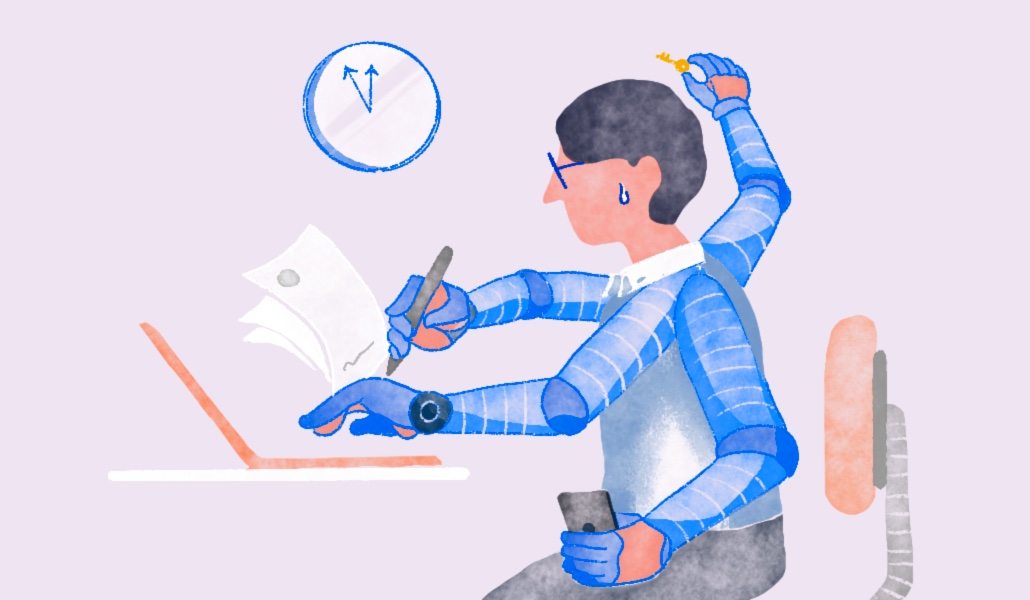‘Maximize how we work together as teams:’ HR silos are collapsing thanks to AI

Five years ago, HR departments existed in silos and were only approached if there was an issue around payroll, benefits, or administrative work.
A lot has changed since then. HR leaders are finding comfier seats in the C-suite, providing direction around RTO, hybrid work, mental health, employee well-being, and new technologies like artificial intelligence.
The latter is one that is beginning to lead to better cross-collaboration throughout an organization, leveraging data and information sharing across multiple departments. The result? HR silos are collapsing.
We spoke to HR leaders to get a better understanding of how AI adoption is giving them the opportunity to work with new people and departments across the company. It’s allowed, they say, for increased information sharing and involvement.
“What’s happened is that each process owner has sort of done their work to some degree in silo,” said Jelena Djordjevic, chief people officer at home services company Thumbtack. “The people leadership team might sort of pull up as we’re doing annual planning and say ‘OK what are we asking the organization to gut check.'”
But that is in the past, now, says Djordjevic. The company is stacking up every single corporate process and looking at it from a birds-eye view, something they are doing for the first time, including creating a steering committee to look at their tech stack entirely.
What adopting AI is really doing, though, is holding them accountable for cross-organization communication, which in turn starts to disintegrate any silos. It’s not the silver bullet, but it is having an impact.
“One learning I had was if you plan things in isolation, then whoever’s planning it is going to do a wonderful job of designing it for the intended needs of that process, but that might not actually be the globally optimal assessment of it,” said Djordjevic. “That’s where me and my role come in. It’s my responsibility to figure out what is the sum of all these parts.”
Jamie Aitken, vp of HR transformation at workplace software solution Betterworks, agrees, saying that she’s beginning to see the conversation bubble up around what HR needs to look like going forward and how it relates to AI.
“Traditionally, HR has been very much in different silos associated with a particular HR process or a part of the employee lifecycle,” said Aitken.
She looks at it like this: say you’re the person in charge of the performance process. Likely, you will just be focused on things like whether the process works, what metrics are associated with it, and ensuring that the process is complete.
“It leads to a limited purview on HR, and more importantly the experience employees have over the course of their career,” said Aitken. “What AI is going to do because data is now going to flow across, I think it’s going to turn HR from these silos, melt those silos to the ground, and HR becomes a team sport.”
For example, if that same person in charge of performance management is thinking about the data around it, they now are beginning to think about how it feeds into succession and compensation.
That’s a future she’s looking forward to. “It will allow us to be having better conversations and driving better value around the overall employee experience,” she says. “That is only going to benefit employees from an experience perspective, but also the value that HR will drive to the business.”
A huge part of that is choosing the right technology that supports cross-functional use cases, which is why Djordjevic’s birds-eye view overhaul can have a huge impact. Otherwise, it is easy to fall victim to app sprawl.
“I’m a very strong believer that our opportunity with AI isn’t so much at the individual level,” said Dr. Rebecca Hinds, head of Asana’s Work Innovation Lab. “It’s really to maximize how we work together as teams and organizations.”
Hinds said differentiating the apps that boost individual productivity from the ones that boost organizational productivity is important. Until companies invest in solutions that speak to one another, those silos won’t break down entirely. But the possibility is there for the company that is up for the challenge.
“AI unlocks the enormous potential to look across thousands of data points and understand who should be collaborating with whom, how we should be building our teams, how we should be building our workflows,” said Hinds. “It needs to be part of a holistic strategy.”


